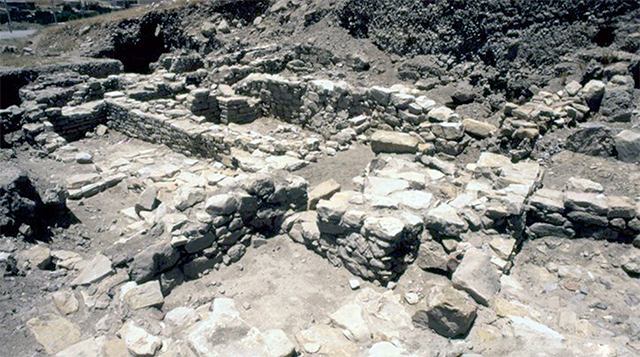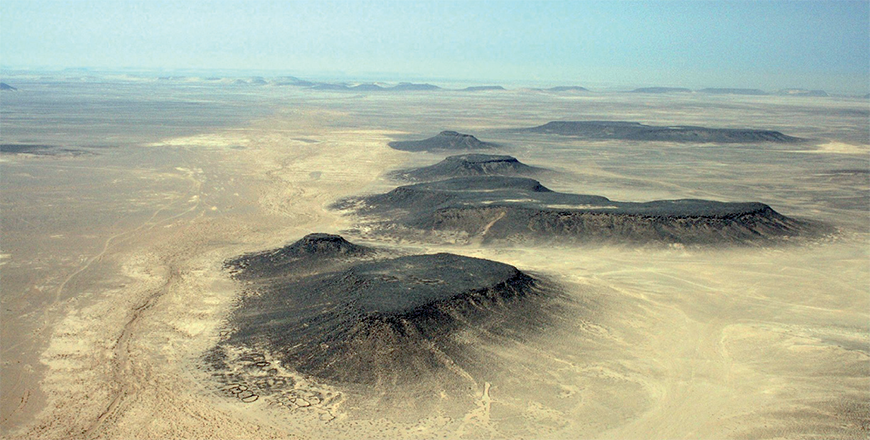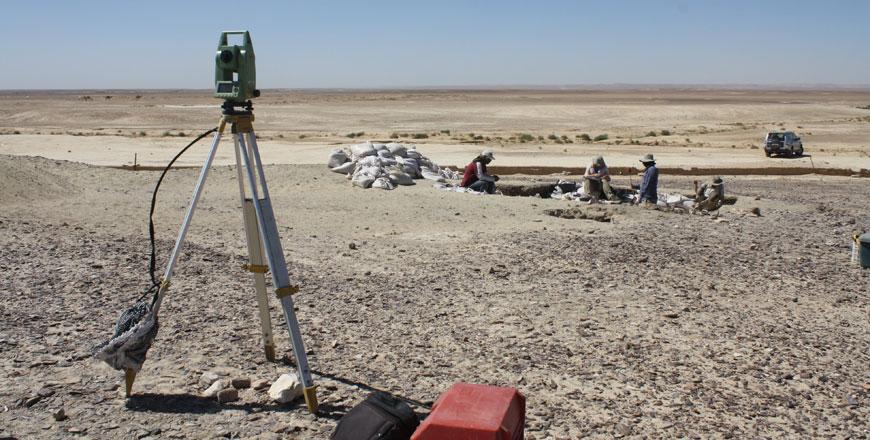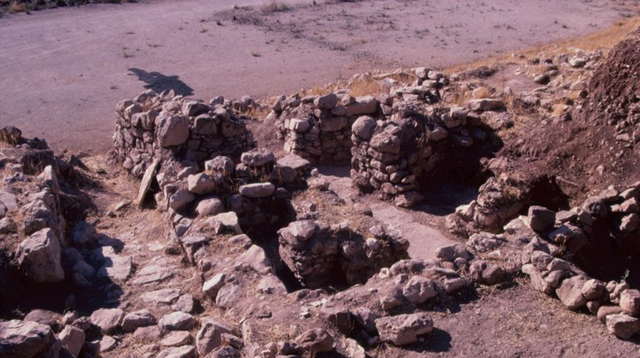You are here
East Bank’s Neolithic era: Unraveling complexity of human development
By Saeb Rawashdeh - Nov 13,2023 - Last updated at Nov 13,2023

A Neolithic site Basta with its residential buildings (Photo courtesy of ACOR/Rami Khouri Collection)
AMMAN — The East Bank region is often considered less important to the emergence of farming societies of the Neolithic period when compared to the Mediterranean area.
The Jordan Valley is located far from the early Neolithic centres of the northern Levant known for being the origin of plant and animal domestication. However, more recent excavations otherwise demonstrate that Jordan had a long sequence of development from the late Pleistocene Epipalaeolithic through the early Holocene Pre-Pottery Neolithic period (a period that covers time span between 20,000BC and 10,000BC).
Cheryl Makarewitcz, a professor at the Institute of Prehistoric and Protohistoric Archaeology at Christian-Albrechts University in Kiel (Germany), gave some background on Neolithic communities of Southwest Asia.
“Neolithic communities emerged from traditions rooted in the early Epipalaeolithic,” Makarewitcz said. “However, while developments such as the construction of shelters, population aggregation and subsistence intensification may be essential for the emergence of a Southwest Asian Neolithic, they are typical of contemporary hunter-gatherer societies and not inherently Neolithic.”
The Neolithic period in Southwest Asia was not a homogenous entity, but instead supported diverse expressions of subsistence, symbolic behaviours and cultural trajectories across the region, Makarewitcz said.
Multiple factors contributed to the change of perception about the Neolithic period in Jordan including the discovery of new sites, more sophisticated excavation techniques and the effective development of analytical approaches.
“It has become increasingly clear that the process that led to the Neolithic was not simply a single trajectory led by one centre of innovation but entailed multiple pathways that involved numerous geographic loci over time, including, for example, the late Epipalaeolithic Mediterranean woodland zone, the early Neolithic Middle Euphrates and later Neolithic Anatolia,” Makarewitcz said.
Makarewitcz added that the most recent genomic research on barley domestication confirms multiple centres of domestication within a mosaic pattern across the region.
Recent research has shown that this area east of the Jordan River was very much an active part of the Southwest Asian Neolithic transition, populated by indigenous communities who appear to have been experimenting with their own innovations.
“Here, distinctive local developments engaged with every part of the Neolithic transformation, including subsistence, demography, society and ideology, providing a useful counterpoint to established narratives and thus highlighting the need for a reassessment of our perception of the Neolithic as a unitary phenomenon,” Makarewitcz said. “As such, the region east of the Jordan Valley contributes to our understanding of the fundamental change in the course of human history that is termed the Neolithic.”
“The conventional and widely accepted idea of the Neolithic is still based on Childe’s early 20th century definition that it affected all parts of life, a subsistence dimension comprised of a farming economy based on domesticated plants and animals, as well as storage of surplus and a system of delayed return of resources, novel social developments to organise larger, more sedentary populations with new mechanisms for the coordination of collective activities, and an ideological shift to focus on fertility,” Makarewitcz elaborated.
Thus, the definition provided by Childe summarises a complex indigenous network of development of different rates, times, and places. Makarewitcz said that Childe was more concerned with process and revolution rather than static endpoints, as he made, “no distinction between the origins of agriculture and the spread of farming economies”.
“The region east of the Jordan provides a case study that emphasises the importance of diversity at the local, regional, sub-regional and even site scales,” Makarewitcz said.
Related Articles
AMMAN — The eastern Black Desert is an area between modern Syria, Jordan and Saudi Arabia with plenty of evidence for the hunting activities
AMMAN — While older hypotheses believed that the developments from hunter-gatherers to Neolithic people used to be linear, new research base
AMMAN — A well-known Neolithic site of Ain Ghazal is home to around half a million animal bone remains, although only a small fraction



















